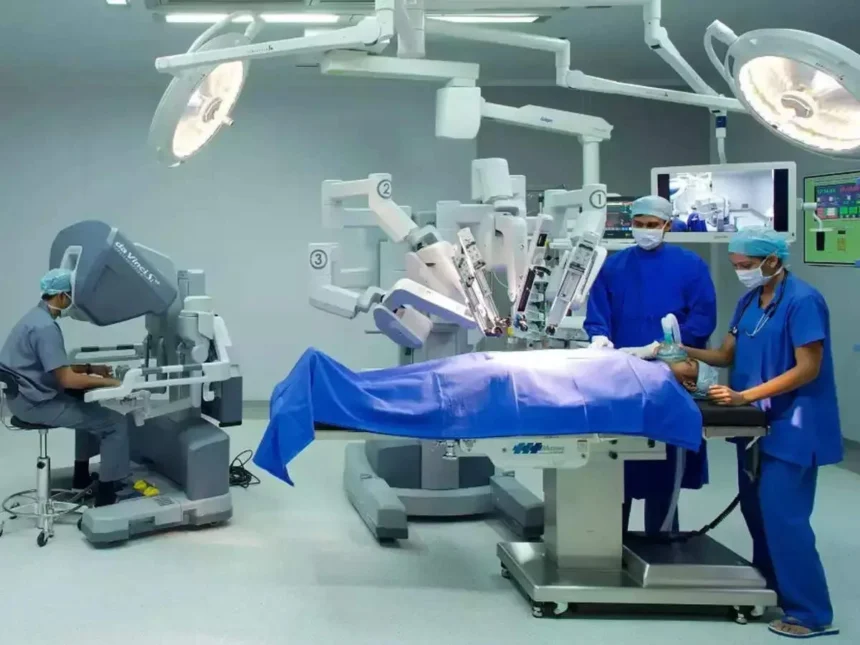Robotic surgery is a modern, minimally invasive technique used for certain medical procedures. In this approach, trained surgeons use advanced systems to perform operations through small incisions. These systems feature a console from which the surgeon controls specialized instruments and a camera that provides enhanced visualization of the surgical site. This method represents a technological advancement in the field of surgery, allowing surgeons to conduct complex procedures with a high degree of precision.
What Is Robotic Surgery?
Robotic surgery is a form of minimally invasive surgery that uses a robotic system controlled entirely by a surgeon. The system does not operate on its own. Every movement is directed by the surgeon in real-time. A typical setup includes a surgeon’s console, a patient-side cart with multiple robotic arms, and a vision system.
The surgeon sits at a nearby console, which is separate from the patient’s operating table. From this station, the surgeon views a magnified, high-definition, 3D image of the surgical area. The surgeon then manipulates master controls that translate their hand, wrist, and finger movements into precise, real-time movements of the surgical instruments attached to the robotic arms.
What Does It Involve?
The process of a robotic surgery follows a structured sequence of events. On the day of the procedure, the operating room is prepared with the robotic system. The patient is administered general anesthesia.
The surgical team then makes several small incisions, known as ports, through which they insert tubes. Robotic arms are then connected, or “docked,” to these ports. Once the system is docked, the surgeon moves to the console to begin the operation. The surgeon manipulates the robotic arms and instruments to perform the necessary tasks, such as dissecting tissue or suturing.
During the surgery, the surgeon might use advanced imaging aids to view blood flow in vessels or to identify specific anatomical structures. After the surgical objectives are met, the surgeon undocks the robotic arms, removes the instruments, and closes the small incisions. The patient is then moved to a recovery area for post-operative monitoring.
What Are the Benefits?
Robotic surgery provides several features that can be seen as potential benefits of this minimally invasive approach. The vision system offers surgeons a magnified and highly detailed view of the operative field, which can aid in the identification of delicate structures. The instruments used in robotic surgery are designed for articulated movement. This dexterity can allow for precise maneuvering in small, confined spaces within the body.
Because the procedure is performed through small incisions, it avoids the large incision required for traditional open surgery. Clinical observations suggest that for certain patients and procedures, these aspects may lead to a shorter hospital stay and a faster recovery period compared to other surgical methods. These outcomes are potential observations and are not guaranteed for every patient or procedure.
Seek Professional Surgical Care
The decision to undergo any surgical procedure requires careful thought and a thorough discussion with a qualified medical professional. If you are exploring surgical options, it is recommended to speak with a surgeon who can provide personalized guidance. They can review the specific indications for a procedure, discuss all potential risks and alternatives, and explain the capabilities of the facility.





